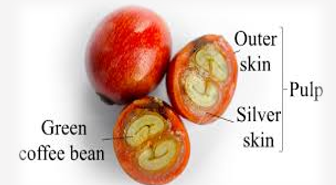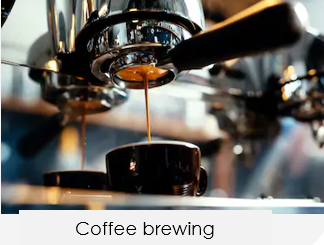Evolution of Modern Coffee – Second and Third wave
- Sumit Guha
- May 15
- 4 min read
Hi Friends,
Welcome to another Blog in which we explore the evolution & commercialisation of coffee as a drink with inventions and developments in the 20th. Century, which are all part of our favourite joe, we have today. To me, I am not addicted to coffee, we are just in a committed relationship. Now, let’s explore the fascinating journey of evolution of coffee which we drink today. Today, I continue discussing the 3 waves or milestones of evolution of coffee in this planet. 1st. wave is already discussed before and so will start with 2nd. wave here. To repeat the 3 waves which are as follows:
1st Wave: Growing coffee consumption exponentially.
2nd Wave: The defining and enjoyment of specialty coffee.
3rd Wave: Purchasing coffee based on its origin and artisan methods of production.
We are experiencing “third wave” in Coffee now. Although the transitions from first, second and third wave are not always discernible, their priorities were certainly unique. Let me trace the history of the second wave.
During the 1960’s coffee went through another revolution. Alfred Peet was a Dutch-American whose father roasted coffee in Holland. Alfred decided to bring his family’s craft to California and in 1966, Peet’s Coffee opened in Berkeley. Enter the early stage of specialty coffee.
In 1971 Peet shared his coffee knowledge and roasting techniques with a couple of friends. These friends joined his staff over the Christmas season to learn the ropes off the business in order to open their own stores. With Peet’s permission, they opened a coffee shop in Seattle using the coffee beans he roasted and mimicking his store layout. The store was called Starbucks. Within their first year of business, they purchased a coffee roaster and sold their own coffee bean products. They didn’t even sell brewed coffee at the time. You could only get beans at Starbucks in the early 70’s.
In 1982, Howard Schultz, a salesman who had been selling drip coffee makers, joined the Starbucks team as their Director of Marketing. He was extremely inspired by his trip to Milan, Italy experiencing coffee houses on every street corner. These cafes served espresso and were a local meeting place for society. Upon his return, Howard tried to convince the owners to serve actual beverages, but they wouldn’t have it. They simply wanted to focus on roasting and selling quality beans. In 1984, Starbucks purchased Peet’s, acquiring their original mentors’ business. The next year, Howard Schultz quit Starbucks to start his own coffee company, Il Giornale, focusing on serving quality coffee drinks. After immediate success, Schultz purchased Starbucks in 1987 for $3.8 million. He was able to combine the roasting techniques of Starbucks with the Italian concept of the cafe. Starbucks then went on a rampage, opening thousands of stores with a goal of putting stores in every country. They started something that we can all be grateful for. They led the second wave of coffee in the United States and ultimately the world. They brought consumers back to the notion that fresh roasted, fresh ground coffee was better than pre ground tins purchased in grocery stores. Starbucks created the modern cafe experience combining freshly roasted beans for sale with the service of brewed coffee and local gathering hubs. The coffee-brewing industry continues to grow today. Coffee shops are opening everywhere, all the time.
One of the driving forces in the transition into the second wave was a reaction to the “bad coffee” being marketed under the first wave. Consumers expressed a desire to know the origin of their coffee and understand the unique roasting styles of what will now be called “specialty coffee” beans. This knowledge added to the enjoyment of coffee as an experience, rather than just a beverage. Some coffee historians’ site the wine industry as an influence, with its principles and applications now applied to the coffee industry. Our coffee vocabulary began to change with second wave. Words like espresso, latte, and French Press became common among lovers of specialty coffee. The criticism of second wave is that it lost its way, forsaking the source of the bean for the social experience of drinking coffee. Coffee shops became big business, luring consumers to a brick-and-mortar shop to drink their favorite coffee beverage. All around the world people are expecting better coffee. Many companies today are seeking to improve the livelihood of coffee farmers as most coffee producing countries are still widely underdeveloped.
The term “third wave” is relatively new, s there is not much history to talk about. The use of the term began in 2002 with an article by Trish Rothgeb (formerly Trish Skeie) of Wrecking Ball Coffee Roaster. In the article, published in the Roasters Guild publication, The Flamekeeper, Rothgeb defined the three coffee movements as “waves”. Following this description, “third wave” became the mainstream term representing the movement.
The third wave of coffee is characterized by coffee lovers interested in the character of the coffee itself. Sometimes this movement is more of a reaction against bad coffee and the way bad coffee has been promoted. Not that marketing and social are not important in third wave growth, but they are not the driving force. Look at it this way: In the first wave, the consumer led the way. It was all about availability to the masses on a national scale. With second wave, the coffee was better, but marketing the experience was the driving force. With third wave, production and marketing take the back seat, and the product takes center stage. With a new emphasis of transparency within the coffee industry, consumers can trace the heritage of their favorite coffee to the very farm from which it was harvested. The soil, altitude, and method of processing become important factors to the discerning pallet. Kona Coffee is an example of third wave transparency. The majority of roasters and coffee shops associated with third wave are small businesses, independently owned and operated. Roasters and coffee shops who roast beans in-house, represent entrepreneurs who love great coffee and have created a business to share that coffee with their communities. These coffee roasters exemplify the philosophy and goal of third wave. Each is an evangelist for product quality, direct trade, and sustainable business practices. Coffee education also takes a significant role in their respective business models, believing that a better-educated consumer strengthens the industry. There is still much more room for improvement in the world of coffee, so our story isn’t over yet. Happy Coffeeing….








Comments